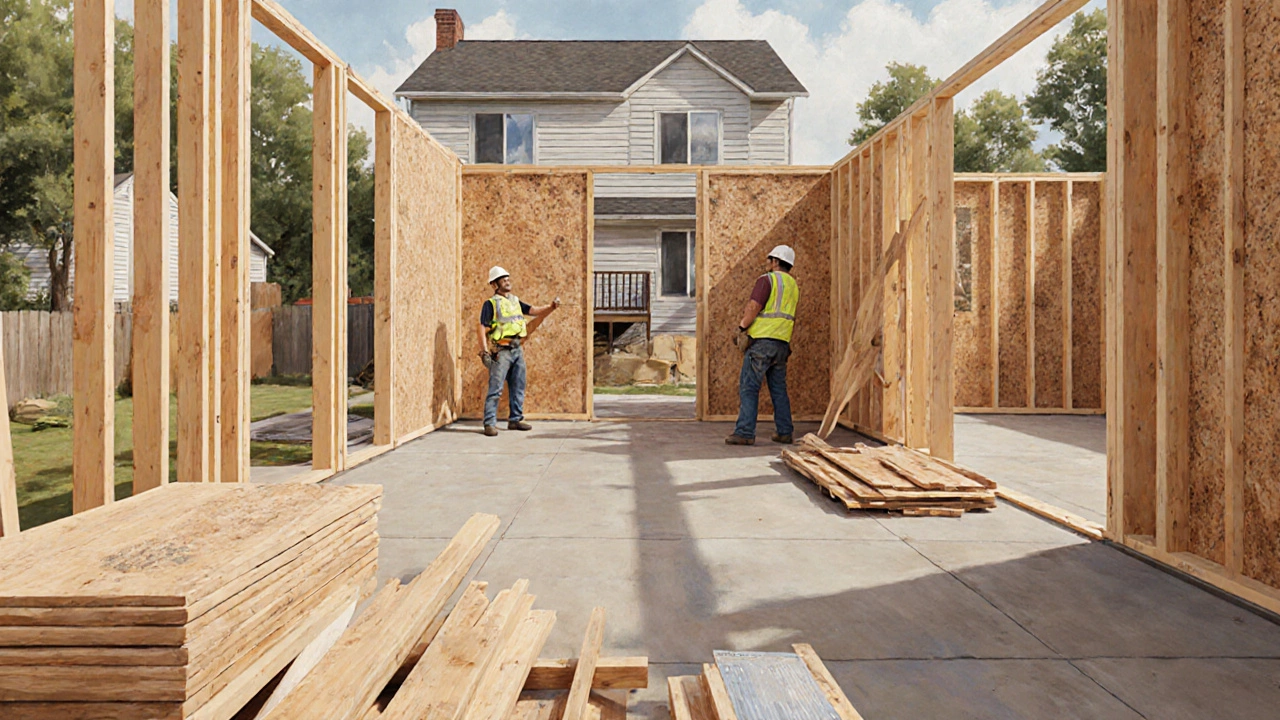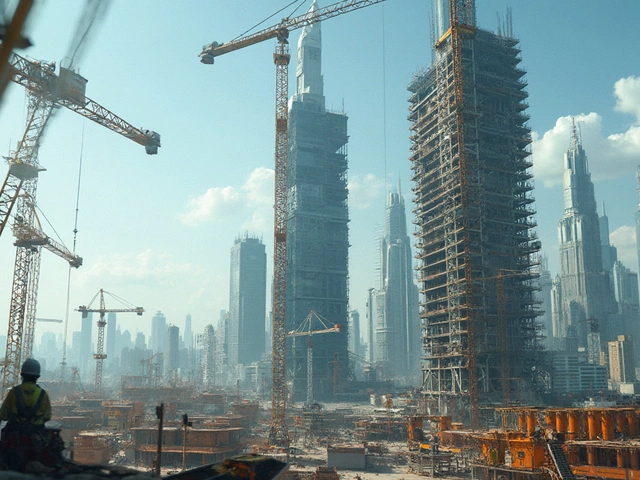Construction Type Identifier
This tool helps identify which of the four main construction types matches your project based on key characteristics.
Your Construction Type Match
Additional Information
When you hear the word "construction," you probably picture a crane on a city skyline or a crew laying bricks. But the industry actually splits into four distinct categories, each with its own goals, materials, and regulations. Knowing these types of construction helps you decide who to hire, what budget to set, and how long your project will take.
What is meant by "construction types"?
Construction types are the broad classifications that group projects by purpose, scale, and the environments they serve. The four most widely recognized categories are residential, commercial, industrial, and infrastructure (sometimes called civil) construction. Each category follows a predictable set of practices, code requirements, and stakeholder expectations.
1. Residential Construction
Residential construction is the building of homes, apartments, and multi‑family dwellings. The primary focus is habitability-think heating, plumbing, and safety. Typical projects include single‑family houses, townhouses, and condo complexes. Materials often revolve around lumber, drywall, and light‑weight steel framing, while finishes rely on cost‑effective yet durable options like vinyl flooring or composite decking.
Key players are homebuilders, general contractors, and architects specializing in livable spaces. Regulations are driven by local building codes that address fire safety, energy efficiency, and accessibility. Because homeowners are the end users, project timelines usually range from a few months for a modest house to a year for a larger multi‑unit development.
2. Commercial Construction
Commercial construction is the creation of buildings that support business activities. Offices, retail stores, hotels, and restaurants fall under this umbrella. The design emphasis shifts toward branding, customer flow, and flexible interior layouts. Heavy‑duty concrete slabs, curtain walls, and high‑performance glazing are common materials.
Stakeholders include property developers, leasing firms, and facility managers. Commercial projects must adhere to stricter fire‑rating standards, ADA compliance, and often stricter seismic or wind codes depending on the location. Timelines can stretch from six months for a small retail fit‑out to 24 months for a high‑rise office tower.

3. Industrial Construction
Industrial construction is focused on structures that house manufacturing, processing, or large‑scale storage. Factories, warehouses, power plants, and refineries belong here. The engineering demands are high: heavy‑duty steel frames, reinforced concrete, and specialized equipment foundations are the norm.
Key players are engineering firms, specialty contractors, and utility providers. Compliance goes beyond typical building codes, reaching into occupational safety, environmental regulations, and industry‑specific standards like API for pipelines. Projects often span multiple years, especially when phased construction is needed to keep part of the plant operational.
4. Infrastructure (Civil) Construction
Infrastructure construction is the building of public works that enable society to function. Roads, bridges, tunnels, airports, and water treatment facilities are classic examples. The work is usually overseen by government agencies or large engineering consortia.
Materials are heavy‑weight and durability‑focused: reinforced concrete, steel girders, asphalt, and geotextiles. Stakeholders range from municipal planners to transportation ministries, and projects must satisfy a complex mix of environmental assessments, public‑consultation processes, and long‑term maintenance plans. Timelines can extend over a decade for massive undertakings like a new highway corridor.
How to Choose the Right Type for Your Project
- Purpose: If the end goal is a place to live, you’re in residential. If it’s a place to work or shop, think commercial.
- Scale and Load Requirements: Heavy equipment or high‑volume storage points to industrial. Large‑scale public benefits indicate infrastructure.
- Regulatory Landscape: Residential and commercial follow local building codes; industrial and infrastructure often require additional permits and environmental clearances.
- Stakeholder Involvement: Homeowners, tenants, and investors shape residential/commercial projects, while governments and utilities dominate infrastructure.

Quick Comparison of the Four Types
| Type | Typical Projects | Primary Materials | Main Stakeholders | Usual Timeline |
|---|---|---|---|---|
| Residential | Single‑family homes, apartments | Lumber, gypsum, light‑steel | Homeowners, developers | 3‑12 months |
| Commercial | Offices, retail, hotels | Concrete, curtain wall, high‑grade steel | Property developers, tenants | 6‑24 months |
| Industrial | Factories, warehouses, power plants | Heavy‑duty steel, reinforced concrete | Engineers, specialty contractors | 12‑48 months+ |
| Infrastructure | Roads, bridges, airports | Reinforced concrete, asphalt, steel girders | Government agencies, consultants | 2‑10+ years |
Common Pitfalls Across All Types
Regardless of the category, projects stumble when budgets are set without contingency, when permits are assumed to be automatic, or when communication breaks down between designers and contractors. A simple checklist can keep things on track:
- Define clear project scope and success metrics.
- Secure all required permits before groundbreaking.
- Engage a qualified contractor with relevant experience for the specific construction type.
- Build a realistic schedule that includes weather buffers for outdoor work.
- Allocate at least 10‑15% of total cost for unforeseen issues.
Next Steps for Your Build
Start by writing a brief description of your project’s purpose. Match that purpose to one of the four types above. Then reach out to professionals who specialize in that category-look for portfolios that include similar projects. Finally, request a detailed estimate that breaks down materials, labor, and regulatory fees. Following these steps will give you a realistic picture of cost and timing before you sign any contracts.
Frequently Asked Questions
What distinguishes residential from commercial construction?
Residential projects focus on living spaces and habitability, using lighter materials and simpler code requirements. Commercial builds cater to business activities, demanding higher fire‑rating standards, more robust structural systems, and often stricter accessibility rules.
Can a single contractor handle all four construction types?
Some large general contractors have divisions for each category, but most specialize. Choosing a contractor with proven experience in your specific type reduces risk and improves quality.
How do building codes differ between types?
Residential codes prioritize occupant safety and energy efficiency. Commercial codes add fire‑suppression, egress, and accessibility layers. Industrial and infrastructure codes incorporate machinery load, environmental impact, and long‑term durability criteria.
Is financing the same for all construction types?
Financing varies. Residential builds often use mortgage products, while commercial and industrial projects rely on business loans, equity investment, or public‑private partnerships. Infrastructure projects are typically funded through government budgets or bonds.
What sustainability measures are common across types?
All categories now integrate energy‑efficient envelopes, renewable energy sources, and waste‑reduction plans. However, the depth varies-residential may use solar panels, while infrastructure could incorporate recycled aggregate in road bases.




Write a comment